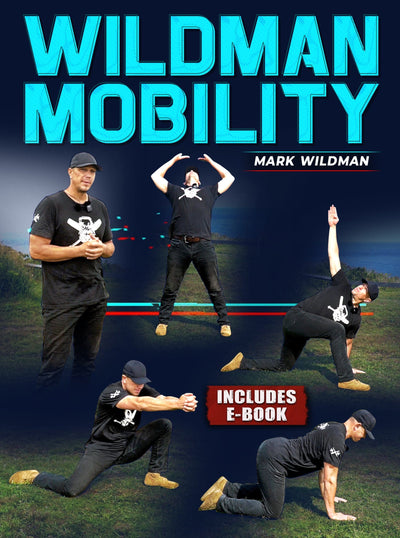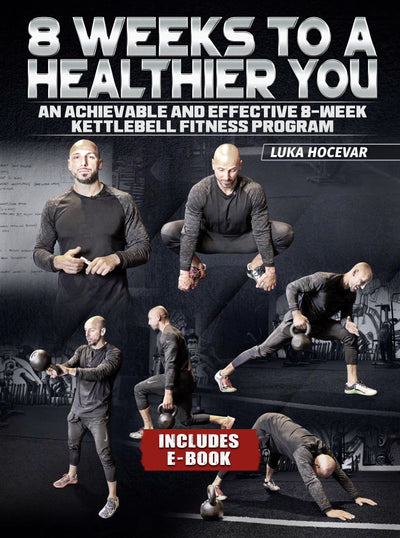10lb Kettlebell Workout
Kettlebells have a rich history that traces back to 18th-century Russia when they were used as counterweights in agriculture. They eventually evolved into a versatile fitness tool. Russian strongmen and athletes recognized their potential in the early 20th century, and this training method made its way to the West. Today, kettlebells are popular for their effectiveness in strength and conditioning workouts.
What this article covers:
Benefits of Using Kettlebells
Kettlebell workouts offer a myriad of advantages. They provide a comprehensive full-body workout by engaging multiple muscle groups simultaneously. Exercises like swings, cleans, and snatches work the legs, back, core, shoulders, and arms, promoting balanced muscle development.
These workouts also improve cardiovascular fitness due to the dynamic and explosive movements involved. They elevate the heart rate, enhancing cardiovascular endurance and facilitating calorie burn, making kettlebells a time-efficient choice for combined strength and cardio training.
Kettlebell training focuses on functional strength, emphasizing movements that mimic real-life activities. This leads to a practical form of strength that translates into daily tasks and sports performance. Moreover, the core engagement required in many kettlebell movements enhances stability, posture, and reduces the risk of lower back pain.
Kettlebell workouts are time-efficient, requiring just one piece of equipment for a wide variety of exercises. They can be tailored to different fitness levels and goals, making them suitable for beginners and advanced athletes alike. Whether you are looking for 35lb kettlebell workout, 5 lb kettlebell workout, 25 lb kettlebell workout, and 30lb kettlebell workout we have you covered!
A 10lb kettlebell workout can be a fantastic way to introduce yourself to kettlebell training or to add a new challenge to your fitness routine. Here are some sample paragraphs to guide you through a workout using a 10lb kettlebell:
Warm-Up
Before diving into your 10lb kettlebell workout, it's essential to warm up your body to prevent injuries and increase blood flow to your muscles. Spend 5-10 minutes performing dynamic stretches and mobility exercises. Focus on movements that target the areas you'll be working with the kettlebell, such as your legs, hips, shoulders, and core.
Sample 10lb Kettlebell Workout
Goblet Squats (3 sets of 12 reps): Hold the kettlebell close to your chest with both hands, keeping your elbows pointed down. Stand with your feet shoulder-width apart, then squat down, ensuring your knees don't go past your toes. Push through your heels to return to the starting position.
Kettlebell Swings (3 sets of 15 reps): Stand with your feet slightly wider than shoulder-width apart. Hold the kettlebell with both hands in front of you. Bend your knees slightly, hinge at your hips, and swing the kettlebell between your legs. Then, thrust your hips forward, and swing the kettlebell up to shoulder level. Let gravity bring it back down, and repeat the motion.
Kettlebell Rows (3 sets of 12 reps per arm): Place the kettlebell on the ground next to a bench or sturdy surface. Place your left knee and left hand on the bench and pick up the kettlebell with your right hand. Pull the kettlebell up towards your hip, keeping your elbow close to your body. Lower it back down with control. Switch sides after completing one set.
Kettlebell Russian Twists (3 sets of 20 twists): Sit on the ground with your knees bent and feet flat. Hold the kettlebell with both hands close to your chest. Lean back slightly, engage your core, and lift your feet off the ground. Rotate your torso to the right, bringing the kettlebell to the right side of your body, then to the left. Each twist counts as one rep.
Cool Down
After completing your 10lb kettlebell workout, it's important to cool down and stretch your muscles. Spend at least 5-10 minutes performing static stretches for your legs, back, shoulders, and core. This helps improve flexibility and reduces muscle soreness.
Safety Concerns
Safety is of utmost importance in kettlebell training. Correct form is essential to prevent injury, so beginners should start with lighter weights to master technique before progressing to heavier kettlebells. Prioritizing a thorough warm-up routine that includes dynamic stretches and mobility exercises helps prepare muscles and joints, reducing the risk of strains. Progressing gradually by increasing the weight load as experience is gained is crucial for injury prevention, as overexertion should be avoided. Selecting the right kettlebell weight that matches your fitness level and the specific exercise is vital to prevent poor form and injuries.
Maintaining control throughout each movement is essential since kettlebells can be unwieldy, and excessive swinging or losing your grip can lead to accidents. Wearing supportive shoes with good grip is advised to prevent slipping and ensure stability during kettlebell exercises. Due to the intensity of kettlebell workouts, it's essential to stay well-hydrated by drinking water before, during, and after your session to prevent dehydration and muscle cramps.
Remember to listen to your body during the workout. If you're new to kettlebell training, start with lighter weights to ensure proper form and avoid overexertion. As you progress, you can gradually increase the intensity by using heavier kettlebells or incorporating more sets and repetitions into your routine. Always prioritize safety and consult a fitness professional if you have any concerns or questions about your workout.
Did you find the blog helpful? If so, consider checking out other guides:
- Double Kettlebell Swing
- Banded Kettlebell Swings
- The Kettlebell Side Swing
- Heavy Kettlebell Swings
- Kettlebell Swing Variations
- CrossFit Kettlebell Swings
- The Kettlebell Swing Challenge
- Kettlebell Two Hand Swing
- Kettlebell Swing for Beginners
- Alternating Kettlebell Swing
- How to Do Kettlebell Swings
- Alternatives to Kettlebell Swings
- 100 Kettlebell Swings a Day
- Kettlebell Swings with a Dumbbell
- 10,000 Kettlebell Swing Challenge





